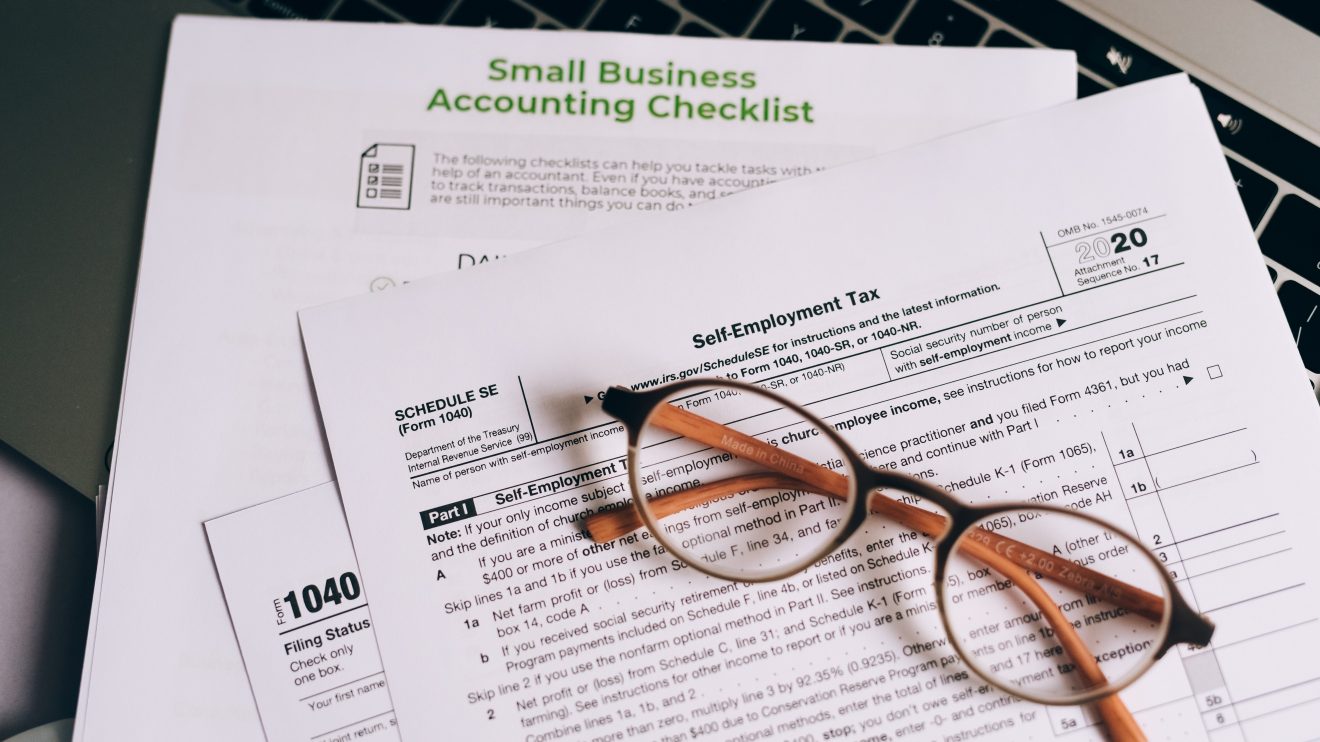We are once again at that time of the year. It’s time to plan the filing of your annual tax return. These are due in March or April, depending on the legal structure of your business. Entrepreneurs and solopreneurs filed a fourth-quarter 2021 estimated tax return on January 15, but the bigger mountain lies just ahead. As you know, planning is key in life and business, and the purpose of this post is to support your tax planning.
Let’s start with the question of whether or not you’ll file a 2021 tax return. If any client paid you at least $400 in total during the year, you must file a tax return. Why is $400 the filing trigger point? Why not $600, the well-known earnings threshold for paying income tax? Because those who are self-employed are required to pay self-employment taxes in addition to regular income tax on the revenue you generate (minus business expenses and a few other deductions). While you may not owe income tax on that $500 project you billed, you’ll pay self-employment taxes on that amount.
Approaching your tax return as a solopreneur
The Internal Revenue Service compels solopreneurs to file taxes like any business owner. In addition to the standard income tax based on your tax bracket and filing status, the IRS requires you to pay the self-employment tax of 15.3 percent, which constitutes the Social Security and Medicare taxes that everyone who works must pay. It also pays the half that’s covered by a traditional employer. (This requirement doesn’t apply to solopreneurs and other business owners who have U. S. clients but aren’t U.S. citizens and do not reside in the U.S.).
Clients pay you the entire amount of the agreed-upon project fee and don’t withhold taxes. Clients report total earnings received on a Form 1099-NEC that they send to you no later than January 31. Solopreneurs pay the self-employment tax directly to the IRS on their own.
Now you probably have business expenses to factor into your revenue earned. If you’re a part-time, occasional freelance moonlighter, you might not owe either income or self-employment taxes. File Schedule C or Schedule C-EZ to calculate and report business expenses to your state’s Department of Revenue and the IRS.
Solopreneurs and other business owners who expect to owe $1000 in taxes in a given year must also pay an estimated quarterly tax. Again, no portion of self-employment income is withheld by clients and applied to taxes that are presumably due. IRS Form 1040-ES will help you calculate how much you’ll owe in estimated taxes each quarter. It’s beneficial to you when your estimated quarterly tax is close to reality because if you underpay, you’ll owe the IRS the remaining balance when you file the annual tax return. Habitual underpayment of quarterly taxes can lead to penalties and fines, along with taxes owed.
Changes to Paypal and other P2P services
Finally, heads up if you use services such as PayPal or Square to accept invoices or other client payments. Be advised that new tax reporting changes affecting these platforms are now in effect. A new tax ruling gives the IRS information on income that solopreneurs and other small businesses proprietors receive via transactions on payment applications.
As of January 1, 2022, businesses that receive payments of $600 or more per year for goods and services purchased through payment apps such as Venmo, Square, PayPal and Cash App will receive Form 1099-K. This is so that the IRS knows you will include those payments in your taxable revenue. In an effort to reduce the amount of unreported taxable income flowing through these payment platforms, the IRS now requires payment app businesses to report on Form 1099-K each of their user’s business transactions (defined as a payment for a good or service). The threshold for reporting was previously 200 transactions per year. This amounted to combined total gross payments of at least $20,000.
By lowering the reporting threshold, peer-to-peer payment applications must now report income if a user earns more than $600 from the sale of goods or services in one year. This change applies only to “income received from goods and services,” meaning it doesn’t apply to gifts or personal transactions. This could include reimbursing friends and relatives for rent, dinner or other social expenses.
If you use payment apps for non-business transactions and receive a 1099-K from one of these platforms, examine it carefully. Be prepared to clarify your activities with the IRS. There may be a chance of double or inaccurate reports on some of your transactions, as these reporting requirements are new. Carefully check the 1099-Ks you receive from your payment apps as well as the statements you receive from clients who use the apps to pay you. Again, you might have to explain to the IRS that the two 1099-Ks are for the same transaction.
Let’s finish up with a peek at important 2022 tax filing dates to remember:
- January 31, 2022 – Deadline for clients to send Form 1099–NEC to Freelance consultants
- March 15, 2022 – Deadline for partnership tax returns (and LLCs taxed as a partnership) and S-corporation tax returns
- April 18, 2022 – Deadline for 2022 Q1 estimated tax payments. It’s also the deadline for C-corporation, sole proprietor (businesses you report on a schedule C) and individual tax returns. If you file an extension for the deadline, the Individual Tax Return Extension Form is due on April 18.
- June 15, 2022 – Deadline for 2022 Q2 estimated tax payments
- September 15, 2022 – Deadline for 2022 Q3 estimated tax payments
- October 17, 2022 – Deadline for 2021 individual tax returns that received a filing extension
- January 15, 2023 – Deadline for 2022 Q4 estimated tax payments






Add Comment